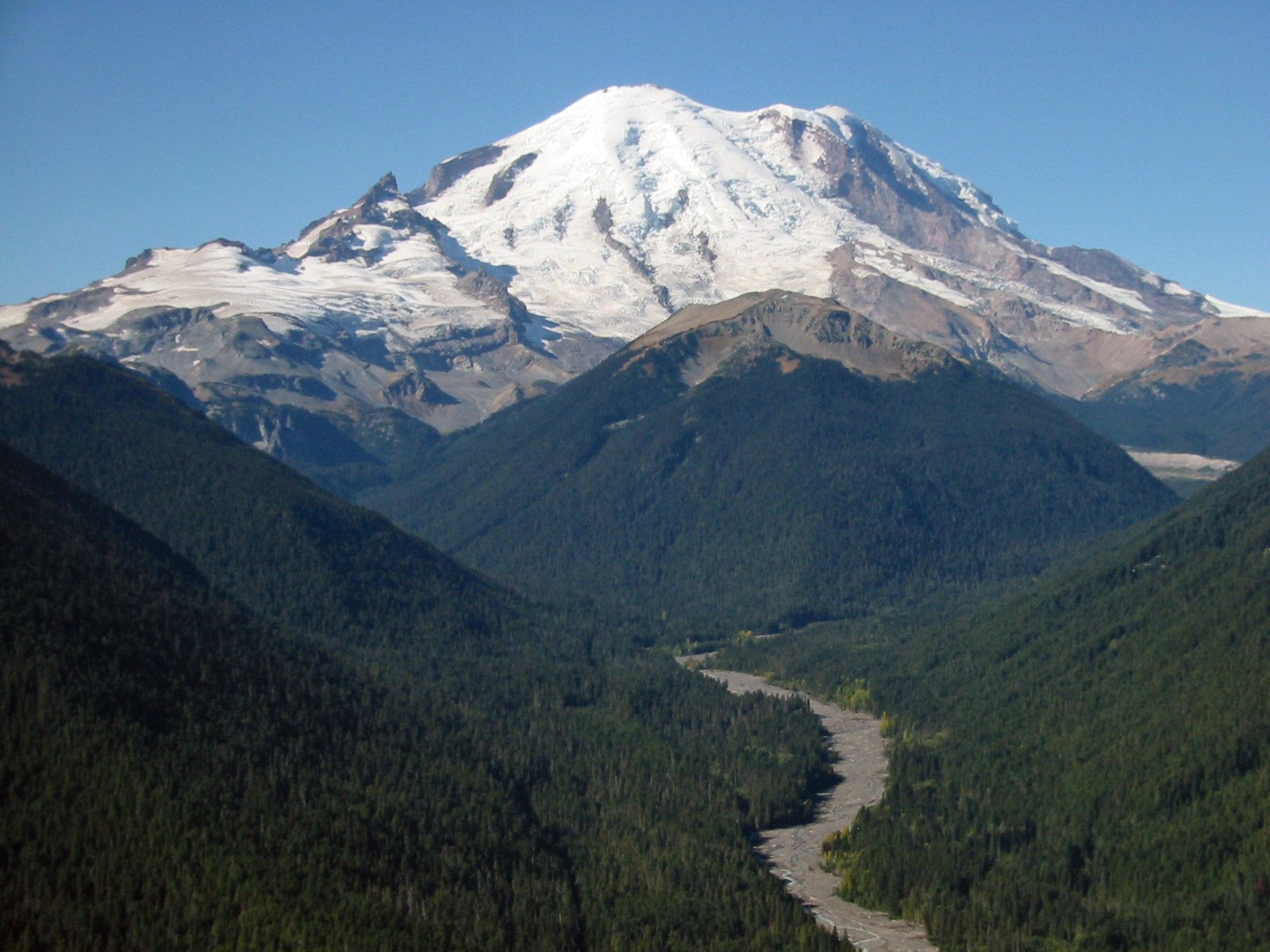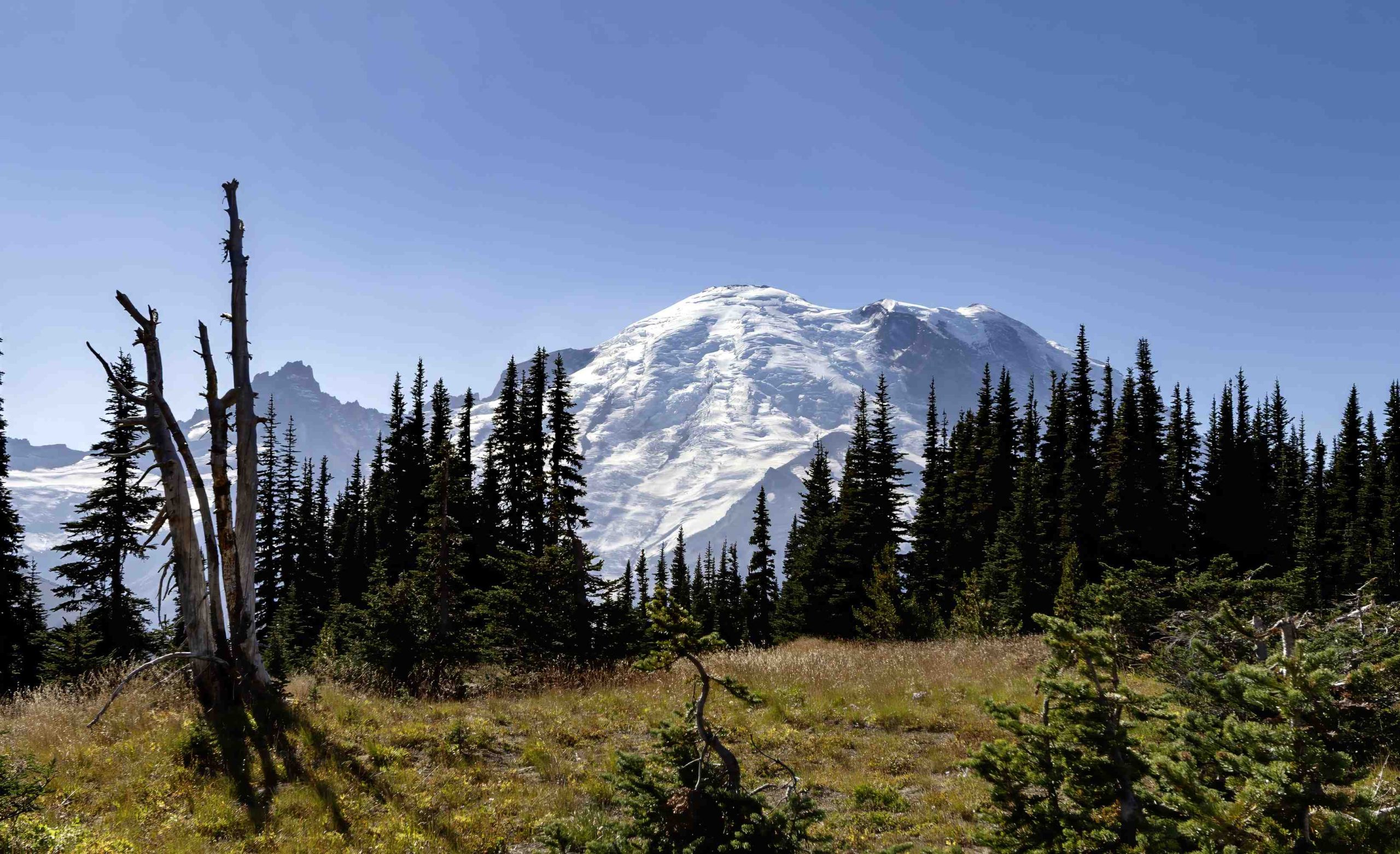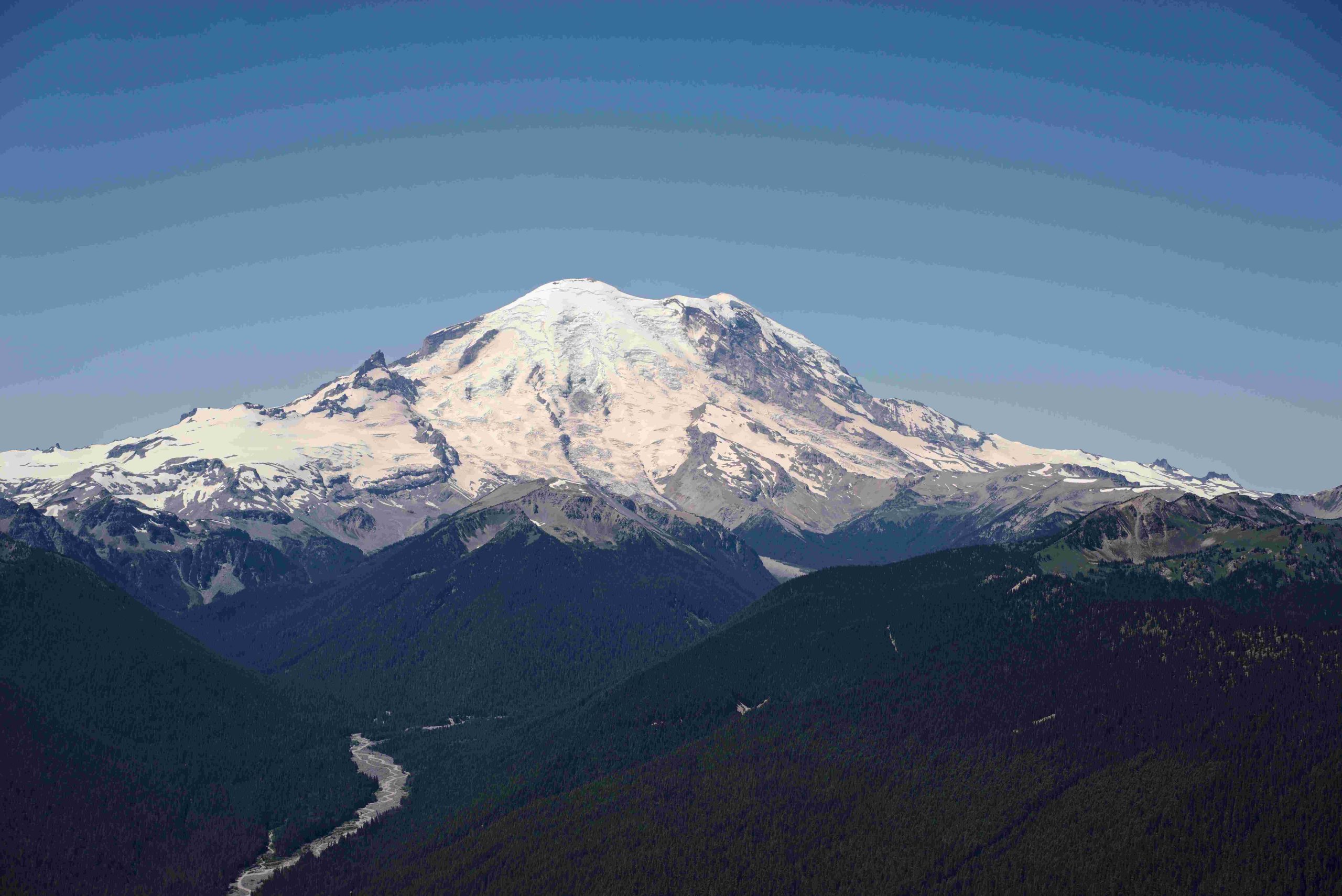Mount Rainier, an iconic peak in Washington State, is experiencing significant changes due to climate change. Glaciers are retreating at an accelerating rate, with a 42% decline in glacierized area since 1896. This has profound impacts on the mountain’s ecosystems, affecting wildlife habitats and species distributions. The warming trend is altering seasonal patterns, forcing flora and fauna to adapt to new environmental conditions. These changes highlight the urgent need for conservation efforts and climate action to preserve Mount Rainier’s unique landscape and biodiversity.
What Are the Current Statistics on Glacier Retreat at Mount Rainier?

The glaciers of Mount Rainier are experiencing rapid retreat due to climate change. Here are some key statistics:
- Glacierized area retreat rate:
- 1994 to 2021: 0.59±0.05% per year
-
2015 to 2021: 0.69±0.05% per year (increased rate)
-
Overall decline:
- 42% reduction in glacierized area between 1896 and 2021
- One glacier has disappeared
-
Two more glaciers are nearing stagnation
-
Specific glacier changes:
- Nisqually Glacier: Retreated 492 feet (150 meters) over 16 months as of September 2015
- Emmons Glacier: After advancing from 1964 to 1984 due to a rockfall, it has been retreating at about 37 feet (11.3 meters) per year since 1984
These statistics demonstrate the significant impact of climate change on Mount Rainier’s glaciers, with an accelerating rate of retreat in recent years.
How Is Climate Change Impacting Ecosystems at Mount Rainier?

Climate change is affecting Mount Rainier’s ecosystems in several ways:
- Species Distribution Changes:
- Altered temperature and precipitation patterns are shifting habitats
-
Plants and animals are moving to different elevations to find suitable conditions
-
Habitat Alteration:
- Changing snow cover affects species adapted to specific snow regimes
-
Temperature changes impact the suitability of habitats for various species
-
Phenological Shifts:
- Warmer temperatures are changing the timing of seasonal events
-
This can lead to mismatches between interdependent species, such as:
- Plants and their pollinators
- Predators and their prey
-
Biodiversity Impacts:
- Some species may struggle to adapt, potentially leading to local extinctions
- New species may move into the area, altering ecosystem dynamics
These ecosystem changes highlight the complex and far-reaching effects of climate change on Mount Rainier’s delicate balance of life.
What Are the Observed Temperature Trends at Mount Rainier?
While specific temperature data for Mount Rainier is limited in the provided sources, regional trends provide insight into the warming patterns affecting the mountain:
- Regional Summer Temperature Increase:
- Nearby areas, such as Mt. Hood, have seen summer temperatures rise by 1.7-1.8°C since the early 1900s
-
This warming trend is consistent with global climate change patterns
-
Implications for Mount Rainier:
- Accelerated Glacier Retreat: Higher temperatures contribute to faster melting of glaciers
- Altered Precipitation Patterns: Changes in temperature affect the form and timing of precipitation
- Ecosystem Shifts: Warming trends drive changes in plant and animal distributions
| Temperature Change | Time Period | Region |
|---|---|---|
| 1.7-1.8°C increase | Since early 1900s | Mt. Hood area (indicative of regional trends) |
While exact figures for Mount Rainier are not provided, these regional trends suggest significant warming that is likely affecting the mountain’s climate and ecosystems.
How Are Wildlife Species Adapting to Climate Change at Mount Rainier?
Wildlife at Mount Rainier is employing various strategies to adapt to the changing climate:
- Range Shifts:
- Many species are moving to higher elevations
-
This allows them to find cooler temperatures and suitable habitats
-
Behavioral Adaptations:
- Changes in breeding times
- Alterations in feeding patterns
-
Adjustments to migration schedules
-
Phenological Adjustments:
- Plants may bloom earlier in response to warmer springs
-
Animals may adjust their life cycles to match new food availability patterns
-
Physiological Changes:
- Some species may develop tolerance to new temperature ranges
- Adaptations in water conservation for drier conditions
Researchers are monitoring these adaptations through:
– Field observations
– Remote sensing techniques
– Long-term ecological studies
These studies track:
– Population sizes
– Species distribution changes
– Behavioral modifications
Understanding these adaptations is crucial for conservation efforts and predicting future ecosystem changes at Mount Rainier.
What Are the Long-term Projections for Climate Change in Mount Rainier?
While specific long-term projections for Mount Rainier are not detailed in the provided sources, general trends and implications can be inferred:
- Continued Glacier Retreat:
- Based on current rates, glaciers are likely to continue shrinking
-
Some smaller glaciers may disappear entirely
-
Ecosystem Shifts:
- Alpine and subalpine zones may shrink as tree lines move upslope
-
Changes in species composition as some adapt and others struggle
-
Hydrological Changes:
- Altered stream flows due to changes in glacial melt patterns
-
Potential impacts on water resources for surrounding communities
-
Increased Fire Risk:
- Warmer, drier conditions may lead to more frequent wildfires
-
This could significantly alter forest ecosystems
-
Extreme Weather Events:
- Possibility of more intense storms and precipitation events
- Increased risk of landslides and erosion
These projections underscore the need for continued monitoring and adaptive management strategies to protect Mount Rainier’s unique ecosystems and resources.
How Can Visitors Help Mitigate Climate Change Impacts at Mount Rainier?
Visitors to Mount Rainier can play a role in mitigating climate change impacts:
- Practice Leave No Trace Principles:
- Pack out all trash
- Stay on designated trails to protect vegetation
-
Minimize campfire impacts
-
Use Sustainable Transportation:
- Carpool or use public transportation to reach the park
-
Consider electric or hybrid vehicles for travel
-
Support Conservation Efforts:
- Donate to park conservation funds
-
Participate in volunteer programs for habitat restoration
-
Educate Yourself and Others:
- Learn about climate change impacts on the park
-
Share knowledge with fellow visitors
-
Reduce Carbon Footprint:
- Choose eco-friendly accommodations
-
Bring reusable water bottles and containers
-
Respect Wildlife:
- Observe animals from a distance
- Do not feed wildlife, which can disrupt natural behaviors
By taking these actions, visitors can help preserve Mount Rainier’s ecosystems and contribute to broader climate change mitigation efforts.

